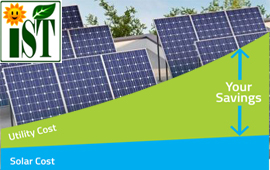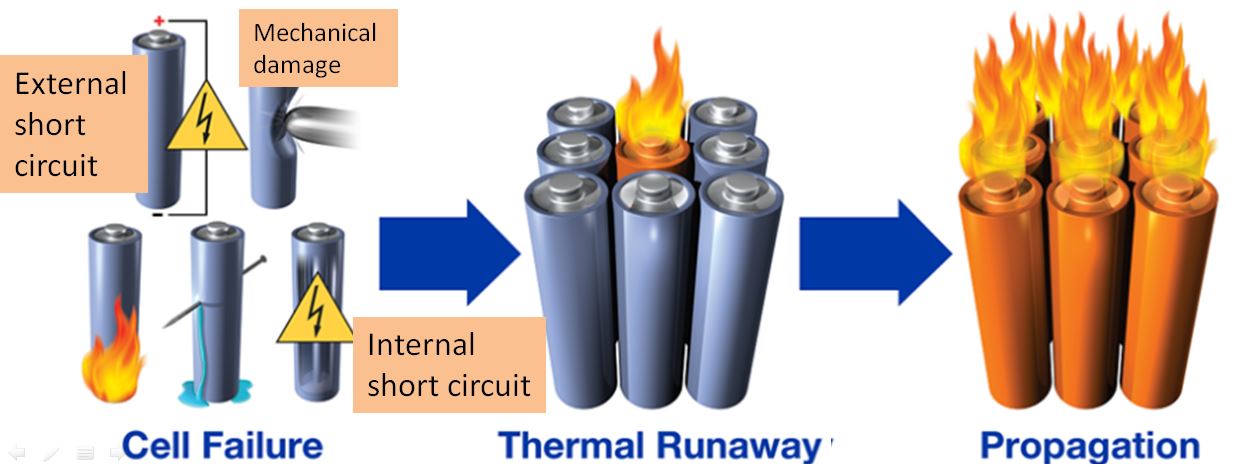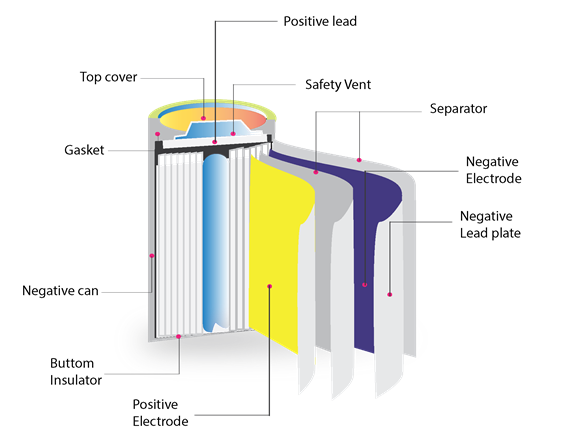course offer
PV Solar Training
 Certificate in Rooftop Solar Project In rooftop solar sector a small entrepreneur needs a strong knowledge about off-Grid, On grid, hybrid system designing and financial benefit, bankable report preparation. This course will cover all aspect of designing and procurement, installation, financial modelling and customer nogotiation skills.
Certificate in Rooftop Solar Project In rooftop solar sector a small entrepreneur needs a strong knowledge about off-Grid, On grid, hybrid system designing and financial benefit, bankable report preparation. This course will cover all aspect of designing and procurement, installation, financial modelling and customer nogotiation skills.
Electric Vehicle Course
Certificate in Electric Bike and E-rickshaw Repairing E- bIKE AND E rickshaw repairing course you will learn the basic overview of electric BIKE AND E-rickshaw mechanism, how Electric 2W and 3W functions, what are the possible reason of failure and how you can repair them by your own, Troubleshooting of Motor, Controller and Charger faults.
Link Building SEO
 5K Backlink Package
5K Backlink Package
All our backlink packages are a one-time fee and offering at a very competitive price. Backlinks we create are 99% do-follow links. Yes, you can submit your own blog content including YouTube / Video / Image URL if any.
Rooftop Solar Project Course
See More Popular Course
Electric Bike and E-rickshaw Repairing Course
See More Popular Course
5000+ High DR UR Backlinks
Search Low Cost SEO Services
All our backlink packages are a one-time fee and offering at a very competitive price. Backlinks we create are 99% do-follow links.Wednesday, December 28, 2022
Monday, November 28, 2022
LITHIUM-ION BATTERY FAILURE CAUSES
LITHIUM-ION BATTERY FAILURE CAUSES

LITHIUM-ION BATTERY FAILURE CAUSES
- External short circuit and cell failure
- Due to External pressure - Machanical damage
- Internal short circuit - due to chemical reaction, high C-rate or manufacturing faults
- Crush - by external cause - deformation of the cells
- Effects of internal short circuit due to - Dendrit growth, Separator damage
- Heat generation, Thermal abuse - Thermal Runway stage
As a crucial problem for the large-scale application of lithium-ion batteries, the safety issue attracts many concerns from consumers and manufacturers.
The failure mechanism is still unclear for some specific abuse behaviors, especially the damage evolution in cells or battery systems during the long-term operation. Based on the failure mechanism, some parameters and features can be used as signals for fault diagnosis and electric management. Safety designs in cells and battery systems can be employed to avoid more damage induced by abuse behaviors.
EV Battery pack assembly line course Topic are not limited to the items below, more related to battery failure mechanism and protection will be considered:
- Battery failure mechanism and modeling
- Safety design
- Fault diagnosis and prognosis
- Thermal and electric managements for better safety
- Advanced materials for improving intrinsic safety
Wednesday, November 16, 2022
degrade of battery pack cycle
battery capacity of tata nexon
maintenance cost of an electric car
electric car battery replacement cost
pillars of an electric mobility ecosystem
fame india scheme 2022
EVs components industry growth FY 2025
battery swapping companies in india
EV challenges and opportunities
EV business opportunities
business opportunities in electric vehicles sector in India
research opportunities in electric vehicles sector
multiple levels of vehicle electrification
sub system of electric vehicle
ICE common parts can use in EV drive train
EV braking systems
EV drive train parts
EV drive train parts to be added in EV
relationship between power and energy
battery technology crash course
lithium ion cells cathode and anode materials
six basic lithium battery
characteristics of lithium cell chemistry
lithium cobalt oxide LCO
lithium manganese oxide LMO
lithium nickel manganese cobalt oxide NMC
lithium iron phosphate LFP
lithium nickel cobalt aluminum oxide NCA
lithium titanate LTO
safer battery materials
indian li ion battery manufacturers
charge and charge capacity
li ion battery rated voltage and operating voltage
lithium ion battery self discharge voltage
factors affecting self discharge of lithium battery
lithium ion battery continuous current and peak current
lithium ion battery c rating
how c rate affects capacity fade
state of charge SOC and state of health SOH of the battery
state of power SOP
lithium ion cells internal resistance
life cycle and DOD relation of lithium ion cell
cycle life of li ion batteries
summery of battery degradation
maximum power point MPP of lithium ion battery
temperature window of lithium ion battery
degrade of battery pack cycle
causes thermal runaway
stage thermal runaway mechanism of lithium ion battery
internal short circuit in a lithium ion battery
lithium ion cell chemistry
cathode active material
cathode metal composition
anode active material
anion and cation
again review basic concept of anode and cathode
current collector at cathode side and anode side
advantages of aluminum foil battery
electrolyte allows the movement of ions
separator the absolute barrier between cathode and anode
solid electrolyte interphase SEI formation
lithium plating is a side reaction on the anode
dendrite growth causing internal short circuit
why dendrites form in li metal anodes
the effects of cycle rate at graphitic electrode
effect of high c rate
lithium ion cell architecture
lithium ion battery basic structure
cylindrical battery housing case
general requirements for packaging structures
anode negative plate
anode and cathode binders binders materials
lithium ion cell separator
lithium ion cell shutdown mechanism
lithium ion cell breakdown mechanism
lithium ion cell ceramic coated separator
positive electrode or the cathode materials
electrolyte cmpound
lithium ion cell protection vents
positive temperature coefficient PTC element
current interrupt device cid anti explosive valve
lithium ion battery thermal management
before battery pack design see
thermal runaway of battery pack
lithium ion cell temperature ranges
why thermal management is important
required functions of thermal design
low temperature effects on lithium ion cell
high temperature effects on lithium ion cell
how heat is generated in battery pack
effect of temperature on battery life
lithium ion cell internal resistance depend
battery thermal management systems BTMS
air cooling and heating system
liquid cooling and heating system
tesla cooling system configuration
direct refrigerant cooling and heating
phase change material PCM cooling
lithium ion battery battery management system
how can we define of li ion battery management system
cell balancing
active cell balancing
passive cell balancing
battery pack layout
battery pack design steps
battery pack assembly steps
battery pack cells configuration
mSnP battery pack
nPmS battery pack
calculations that are used in battery design
14s 6p pack using 21700 LFP cylindrical cell
li ion battery assembly line
assembly steps 1 cell sorting
cell capacity tester machine
insulation sticker pasting machine
mechanical design and packaging of battery packs
AC spot welding machine
DC spot welding machine
single side spot welding machine
double sides spot welding machine
auto laser welding machine
top five types of spot welding machine
BMS tester
welding bms to the battery pack
PVC heat shrink wrapping
battery pack comprehensive tester
battery aging cabinet
plant layout for lithium ion pack assembling
EV charging station site assessment
different type of EV charging system
charging station considerations
components of charging station
power flow diagram of level 3 and 4 EV charging
open charge point protocol OCPP
financial detail of charging station
proposed tariff for EV charging
on board charger for electric vehicles
charging current for lithium ion battery
factors that affect charging speed
public charging station PCS
site design guide line
turnkey construction for PCS
EV PCS site layout and execution
PCS foundation and cable raceway excavation
EV charging station electrical connection
charging station configuration
public charging infrastructure
financial detail of a PCS of 4 nos of charger
Monday, May 23, 2022
Friday, February 25, 2022
Li-ion Cylindrical Battery Fabrication
Step 1 Electrode Sheet Preparation
- Furnace: raw active material (Cathode & Anode)
- Milling Machine: grind & normalize the sintered material
- Mixer: mix active, conductive, and binder material into slurry under vacuum
- Coater: apply layer(s) of slurry onto current collector and dry it with an attached heater
- Rolling Press (calendar): compress the electrode to a desired thickness/density
Step 2 Cell Assembly
Winding Method
- Slitting Machine: slit/cut electrode sheet to strips of desired size
- Ultrasonic Welding Machine: joining of multi-layer electrodes, and/or tabs to collectors
- Winding Machine: form layers of Anode, Separator, and Cathode into a cell core
- Short-circuit Detector: test for integrity of the cell
- Vacuum Oven: remove any moister within the cell
Step 3 Case Sealing
- Spot Welding Machine: allow contact to be made from cell to bottom of case (grounding)
- Grooving machine: create indent on the neck of case to allow for proper seal (after inserting the cell core)
- Welding Machine: attach cell to cap (positive)
- Electrolyte Filling: inject the case with electrolyte under suitable environment within glove box
- Sealing Machine (Crimper): align cap with the open end of case and seal case inside glove box under suitable environment
- Recommend: wrap the newly finished battery with heat-shrinkable PVC for isolation of positive and negative terminals
- Battery Analyzer: charge/discharge the assembled battery for cell activation
Step 4 Battery Testing
Battery Analyzer to test the battery’s performance and Resistance Tester to measure battery’s internal resistance
Electric Vehicle and EV Lithium-ion Battery Training Courses
EV EVSE Business Management Course for Entrepreneurs
This Techno Commercial course: Throughout this training session, AEVT bridges the needs of startups so that candidate can understand the technology from basic of EV to EVSE equipment like Lithium-ion battery, Battery pack assembly process, EV Motor, Charger, charging station development and all others parts/ equipment's calculation, selection, building a Legal Foundation, Understanding Finance Basics, Business Planning and Fundraising.
Lithium Battery Pack Assembly course will cover li-ion cell to battery characteristic's, different parameters, EV battery Pack design aspect, calculation, assembly line unit detailing with financial aspects ,govt guidelines ,policies etc.
Electric Vehicle Charging Station Design, Installation
Consultancy Services
Saturday, January 1, 2022
Electric vehicle charging per kilometre 60 paise
The Ministry of Power has previously announced new EV charging infrastructure standards and guidelines. In compliance with the rules, the state government has fixed the ceiling cost of service charges to be charged by electric vehicle public charging stations. It approved the Rs 12.06 + applicable GST service cost maximum for electric vehicle rates covered by State/Central subsidies.
it is still less expensive than petrol and diesel. “It costs Rs 300 if any four-wheeler takes 25 units to completely charge their cars.” “You can’t even get three litres of petrol with the same quantity of petrol,”
Car comparison between petrol, diesel and electric vehicles
If the price of petrol is considered at Rs 100 per litre and mileage is considered 16 km per litre, the cost of the car, per kilometre, will be about Rs 6.25.
If the price of diesel is considered at Rs 95 per litre and mileage is considered 22 km per litre, the cost of the car, per kilometre, will be around Rs 4.31.
Whereas, an electric vehicle requires 30.2 units of electricity on being full charged, therefore if we consider Rs. 6 per unit as the electricity cost then it would cost Rs 181.2 for getting charged fully and then it would run for about 300km. In this way, its cost per kilometre will be close to 60 paise.
The cost of charging an electric vehicle (EV) in Mumbai would work out to Rs 15 per unit, according to the Brihanmumbai Municipal Corporation (BMC). As per their calculations, an electric car would take anywhere between 20 and 30 units to be fully charged and it would cost the user Rs 200 to Rs 400.
In Delhi, the government has fixed Rs 4.5 per unit for low tension charging of e-vehicles and Rs 5 per unit for high tension EVs. There would be a service charge based on the charging facility also. So it would cost anywhere between Rs 120 and Rs 150 for a fully charged EV.
As per the infrastructure guidelines set by the government, it is compulsory to set an EV Charging station at every 3km in cities and 25kms on Highways on both sides. For long-range and heavy-duty vehicles, there should be a charging station at every 100kms on both sides of the road (mostly Highways).
Cost of Setting Electric Charging Station in India
Cost of setting EV charging station in India varies from Rs. 1 Lakh to Rs. 40 Lakhs depending on the types of chargers and investment one is willing to make. However, considering a broader scenario and a supply of 250KVA EV Station below is the estimate.
| Charger Type | CCS – 60kW | CHAdeMO – 60kW | Type 2 AC – 7/22kW | Bharat DC-001 – GB/T | Bharat AC-001 |
| Approximate Cost | 12,50,000 | 12,50,000 | 1,00,000 | 2,40,000 | 60,000 |
- New Electricity Connection (250 KVA): 7,50,000 /-
- Civil Works: 2,50,000 /-
- EVSE Management Software + Integration: 40,000 /-
- Technicians, Manpower, Maintenance etc: 3,50,000 /- yearly
- Advertising and Promotion: 50,000 /-
- Land Lease (if the land is at lease): 6,00,000 /- yearly
Total Approximate: Rs. 40,00,000 /- (First year including setup and if the land is at lease)
Annual maintenance from the second year: Rs. 10,00,000 /- (Including land lease)
Minimum Infrastructure Requirement for EV Charging Station
- A transformer with subsequent substation must be installed along with safety equipment
- For the purpose of metering/ termination, there should be a 33/11KV Cable with related equipment.
- Appropriate Civil works should be there
- There should be adequate space for charging and Entry / Exit of Vehicles
- Necessary local certifications, if any required. (Varies state to state)
Understanding the Business (Revenue Model)
Revenue projections are something which we do not have control on. But we can assume a scenario and work out a feasible projection for the next 5 years.
If we take the above investment of Rs. 40 Lakhs, we get approximate of 500-1000 kWh per day EV power for consumption.



